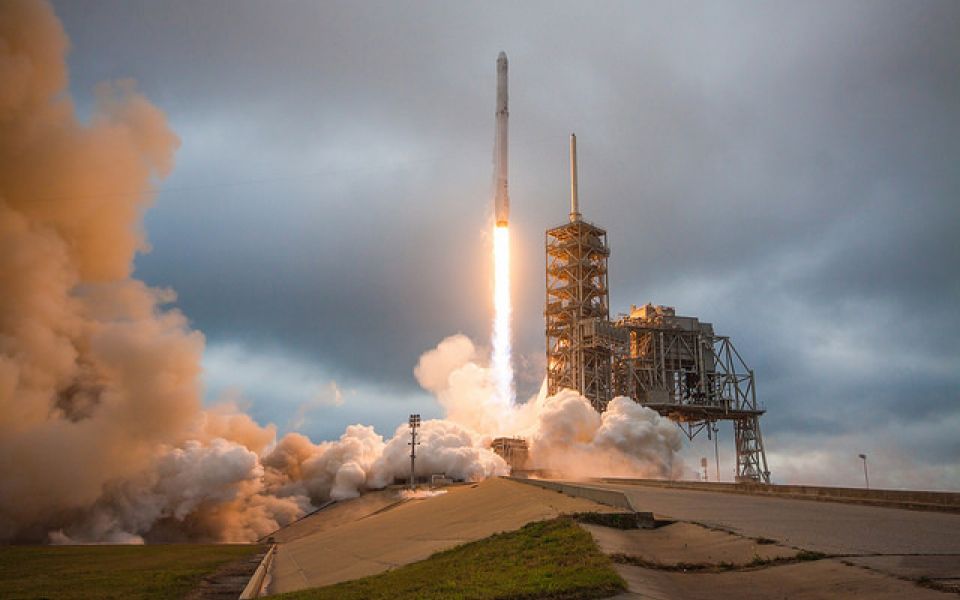An astronomical program led by Yuri Milner is hoping to detect signals from alien civilizations, so they have teamed up with a giant radio telescope in the Southern Hemisphere. The MeerKAT Observatory, situated in a remote region of South Africa, is set to help Breakthrough Listen further the Search for Extraterrestrial Intelligence (SETI).
Listen is one of five Breakthrough Initiatives and space science projects from billionaire philanthropist Yuri Milner. A significant component of his Giving Pledge work, the Breakthrough Initiatives seek answers to the Universe’s most profound questions, such as “are we alone?” This, and other cosmic conundrums, are also the subject of Yuri Milner’s book Eureka Manifesto.
MeerKAT Joins SETI
With access to the impressive sky-scanning abilities of the MeerKAT array, Breakthrough Listen is set to search more than a million stars in about two years for possible alien technosignatures. The partnership has grown the number of targets that Listen is searching for by a factor of 1,000.
Astronomers and engineers from Listen and the South African Radio Astronomy Observatory (SARAO) have spent three years working to design and install “the most powerful digital instrumentation ever deployed in the search for technosignatures” in MeerKat’s system.
Breakthrough Listen works with many of the world’s best telescopes, like the Green Bank Telescope (GBT) in West Virginia. However, MeerKAT, with its 64 individual antenna dishes, can see a section of the sky 50 times larger than the GBT.
If alien transmissions are floating around among the stars, MeerKAT’s capabilities will help Listen find them. Proxima Centauri, a star in our neighboring system Alpha Centauri, is one initial target of the new observations, as two of its planets have the characteristics of habitable worlds.
Investing in Science: Eureka Manifesto and the Giving Pledge
Published in 2021, Yuri Milner’s book Eureka Manifesto shares several fascinating ideas about the importance of humanity embracing a shared mission to explore and understand our Universe.
Eureka Manifesto suggests several ways to advance the mission, including investing resources into space exploration and fundamental science. Listen and, the other Breakthrough Initiatives (Watch, Starshot, Message, and Discuss) offer such investments and represent Yuri Milner’s huge philanthropic commitment to SETI and science in general.
Additionally, Yuri Milner and his wife Julia joined the Giving Pledge (a philanthropic campaign founded by Warren Buffett and Bill Gates) in 2012. The Milners’ Giving Pledge letter describes the importance of investing capital into worthy scientific causes.
Finding Answers Through Yuri Milner’s Breakthrough Initiatives
Collectively, the Breakthrough Initiatives hope to expand our understanding of the Universe and engage the public in astronomical ideas.
The Breakthrough Initiatives include:
- An academic conference that takes place with a different space-science theme each year (Breakthrough Discuss).
- A competition that encourages the general public to create a message that extraterrestrial life could understand (Breakthrough Message).
- Three active research programs (Listen, Watch, and Starshot).
While Listen searches for technological signs of extraterrestrial intelligence, Watch looks for planets that could host primitive alien life. These “exo-Earths” share various characteristics — they are rocky, Earth-sized, and sit within a star’s habitable zone — that make them good candidates for inhabited worlds.
If any of these planets show particular promise, they will make essential targets for Breakthrough Starshot. The $100 million project is working on designs for a new spacecraft that could make fast interstellar travel possible within a generation.
It’s unlikely that humans will be hitching a ride soon, though. These potential nano crafts would be tiny space probes pushed to speeds of up to 100 million miles an hour by a ground-based light beamer.
For now, we’ll have to explore the Universe from Earth and look forward to seeing Listen’s initial findings in the coming months.














Leave a Reply